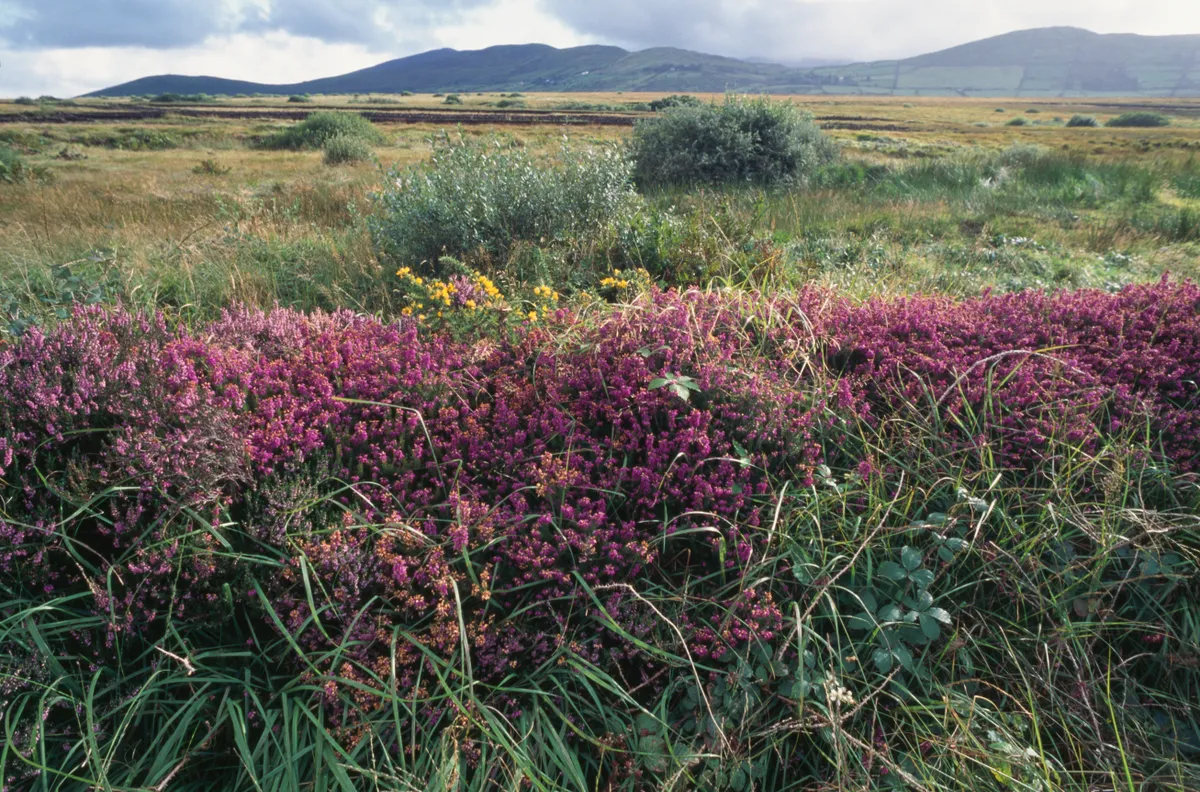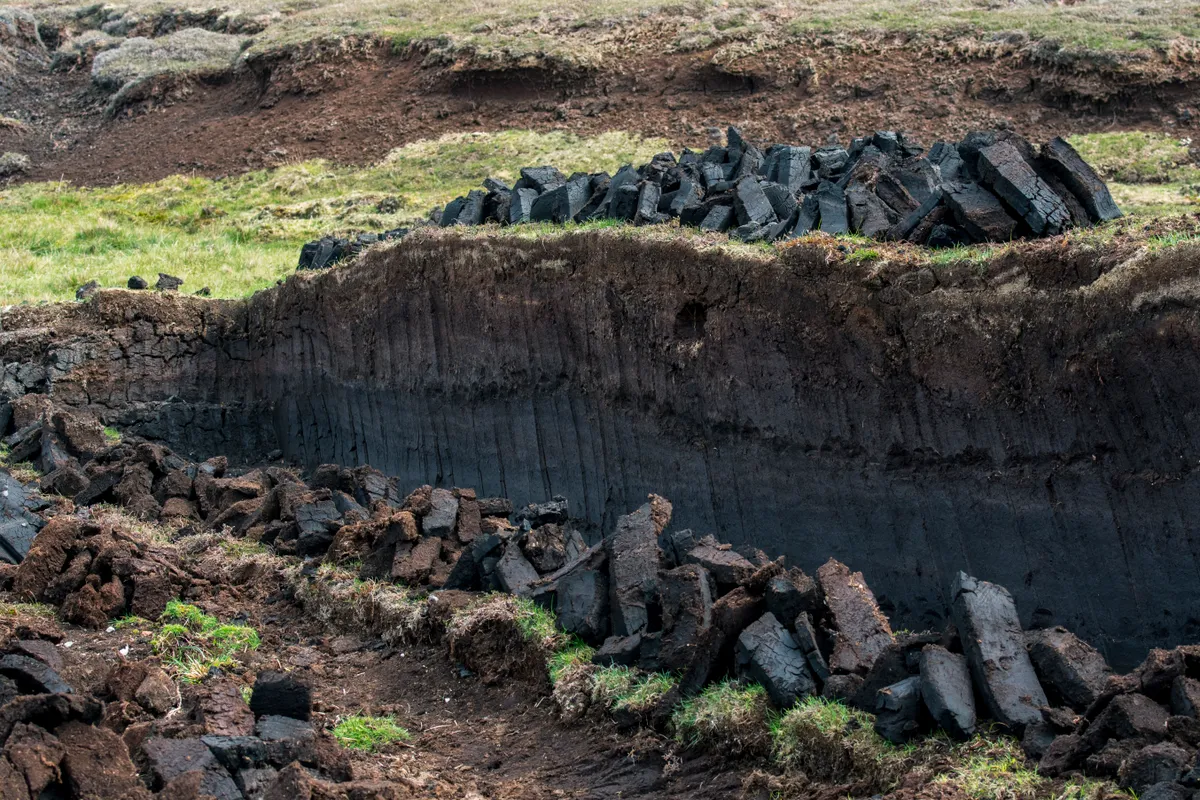My personal opinion, which is heavily influenced by the research we have done here at the RHS, is that every gardener should try and use exclusively peat-free compost.
By buying peat free compost, gardeners are supporting the efforts being made by companies to phase out peat. It is true that there are shortages of some ingredients used in the manufacture of peat free composts, but these are being resolved. There are also shortages of peat as countries stop peat extraction. Where peat composts are used, more and more often the peat is blended with other materials, so that progress is being made in reducing peat use in this way too.
Since the 1990s it has become apparent that the depletion of the peat bogs is proceeding rather fast. Contrary to what many people have said, peat is not replenished in a sensible time frame. It takes hundreds of years for a peat bog to reform.
This is true both in Britain and Ireland, and also in places from where we have imported peat including Finland, Estonia and Latvia. These countries are also concerned about their peat bogs.
Peat bogs are thriving ecosystems which get destroyed and aren’t replaced in any sensible way
But there are other very good reasons to leave peat bogs untouched. They are thriving ecosystems which get destroyed and aren’t replaced in any sensible way. Then there’s the climate-change factor. The carbon content in peat is enormous. When you dig out peat and allow it to oxidise, all the carbon dioxide is released into the atmosphere, which contributes to global warming.

Surprisingly, it is gardeners, not commercial growers, that use the most peat compost. The main reason is that there are millions of gardeners. They tend to use big pots and window boxes, so the volume of compost needed is very high, whereas commercial growers tend to raise young plants in small pots.
For bigger troughs and tubs, there is scope to use homemade potting media such as two parts garden soil and one part compost from the compost bin. Some people find getting used to peat free potting compost tricky – one dodge is to half fill the pot with peat free potting compost and top up with reduced peat compost and progressively eliminate the material that contains peat.
Nearly half the potting compost used by gardeners is dug into the soil to improve it. Potting compost is less effective than garden compost, composted manure and other material specifically designed for improving soil. Ideally, use potting compost only for potting, to conserve the relatively scarce ingredients used in peat free potting compost.
Nearly half the potting compost used by gardeners is dug into the soil to improve it. It is less effective than garden compost, composted manure and other material specifically designed for improving soil. Use potting compost only for potting
Full statistics on peat usage haven’t been published since 2015, but those can still give an idea of the scale of use: in 2011 peat accounted for 62 per cent of the total market, which fell to 52 per cent in 2015. Commercial nursery consumption fell from 72 per cent in 2011 to 64 per cent in 2015. Around 58 percent of compost brought home by gardeners in 2011 was peat.
The Department for Environment, Food and Rural Affairs (Defra) has recently consulted with the industry and the public and are currently assessing the 4,000 responses. They have already said they aim to ban retail sale of peat by 2024, and commercial nursery sales by 2029.

Extra measures such as a ‘peat tax’ to encourage faster action on phasing out peat have been suggested. A peat tax would make peat compost more expensive and therefore peat free potting compost more competitive. It is unclear how this will affect the millions of plants coming in from the Netherlands, for example, if they are grown in peat-based compost.
A Responsible Sourcing Scheme for Growing Media is an online tool (www.responsiblesourcing.org.uk) developed by the horticultural industry in collaboration with leading retailers, Defra and other organisations. Gardeners can use this to identify potting composts with good peat free credentials.
The RHS is almost peat free and aims to be entirely peat free by 2025. There’s a tiny amount we need for growing certain tricky plants, including carnivorous ones. Many people have tried to find a peat-free alternative but they are not offered commercially, to the best of my knowledge. But my soil science colleagues at RHS Garden Wisley are going to launch a research project into that, so we can finally replace that tiny but annoying fraction.
Guy's tips on reducing peat use in your garden
1
Check the label
All composts differ. Read the instructions on the back as they will give guidance on how much feeding and watering you need. My favourite composts are often based on wood fibre and you need a little more water and fertiliser than you might need for peat-based material.
2
Choose a compost that’s suitable for what you want
Peat-free composts are not quite as flexible as peat composts so it’s important to choose seedling compost if you are raising seeds, for example.
3
Take it step by step
If you're finding transitioning to peat free gardening hard, half fill a pot with peat-free compost and then top it off with reduced peat compost. By reducing the topping off over time you'll get used to the peat-free compost and can make the full transition.
4
Watch out for seedlings
When I first started using peat free compost around 20 years ago, I found that when transplanting seedlings into pots, it was better to use larger seedlings when I wasn’t using peat compost. Instead of transplanting them when there are two seed leaves, wait until there are a few true leaves, and then move them.
5
Water seeds
I have found generously watering seedings well after transplanting them often really helps.